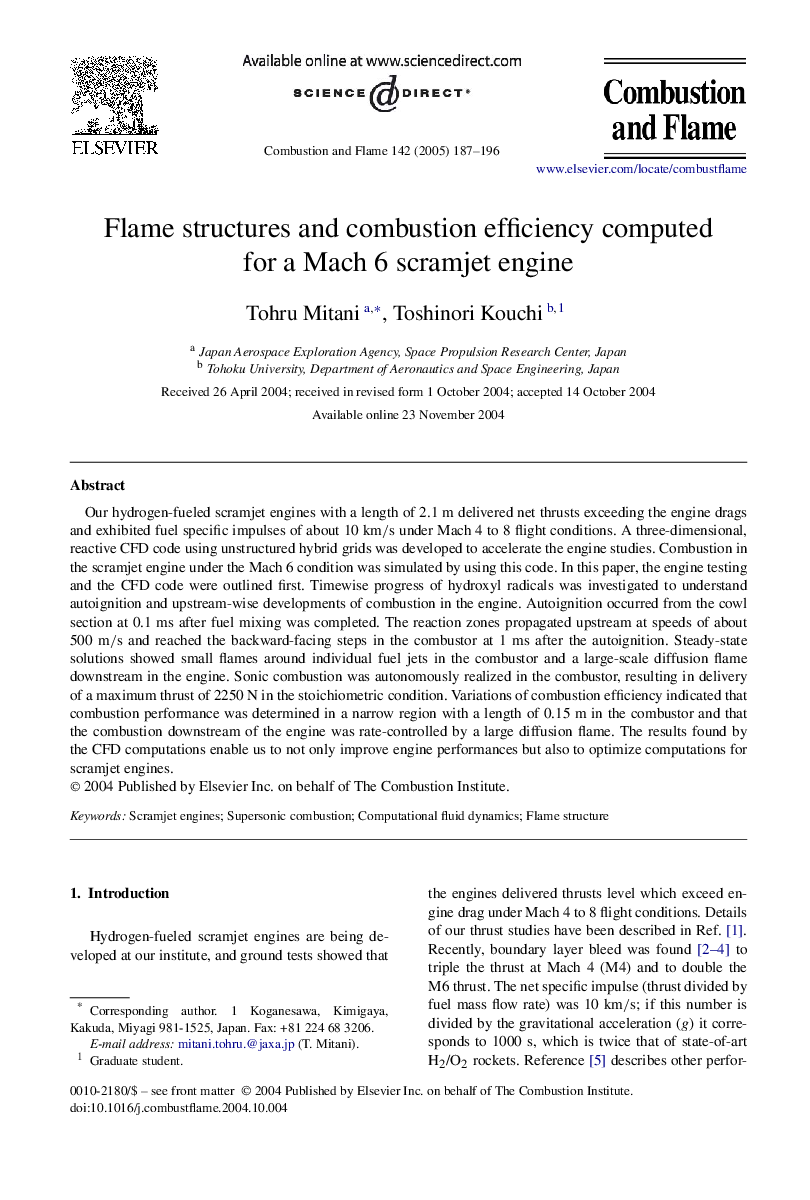| Article ID | Journal | Published Year | Pages | File Type |
|---|---|---|---|---|
| 10264436 | Combustion and Flame | 2005 | 10 Pages |
Abstract
Our hydrogen-fueled scramjet engines with a length of 2.1 m delivered net thrusts exceeding the engine drags and exhibited fuel specific impulses of about 10 km/s under Mach 4 to 8 flight conditions. A three-dimensional, reactive CFD code using unstructured hybrid grids was developed to accelerate the engine studies. Combustion in the scramjet engine under the Mach 6 condition was simulated by using this code. In this paper, the engine testing and the CFD code were outlined first. Timewise progress of hydroxyl radicals was investigated to understand autoignition and upstream-wise developments of combustion in the engine. Autoignition occurred from the cowl section at 0.1 ms after fuel mixing was completed. The reaction zones propagated upstream at speeds of about 500 m/s and reached the backward-facing steps in the combustor at 1 ms after the autoignition. Steady-state solutions showed small flames around individual fuel jets in the combustor and a large-scale diffusion flame downstream in the engine. Sonic combustion was autonomously realized in the combustor, resulting in delivery of a maximum thrust of 2250 N in the stoichiometric condition. Variations of combustion efficiency indicated that combustion performance was determined in a narrow region with a length of 0.15 m in the combustor and that the combustion downstream of the engine was rate-controlled by a large diffusion flame. The results found by the CFD computations enable us to not only improve engine performances but also to optimize computations for scramjet engines.
Related Topics
Physical Sciences and Engineering
Chemical Engineering
Chemical Engineering (General)
Authors
Tohru Mitani, Toshinori Kouchi,
